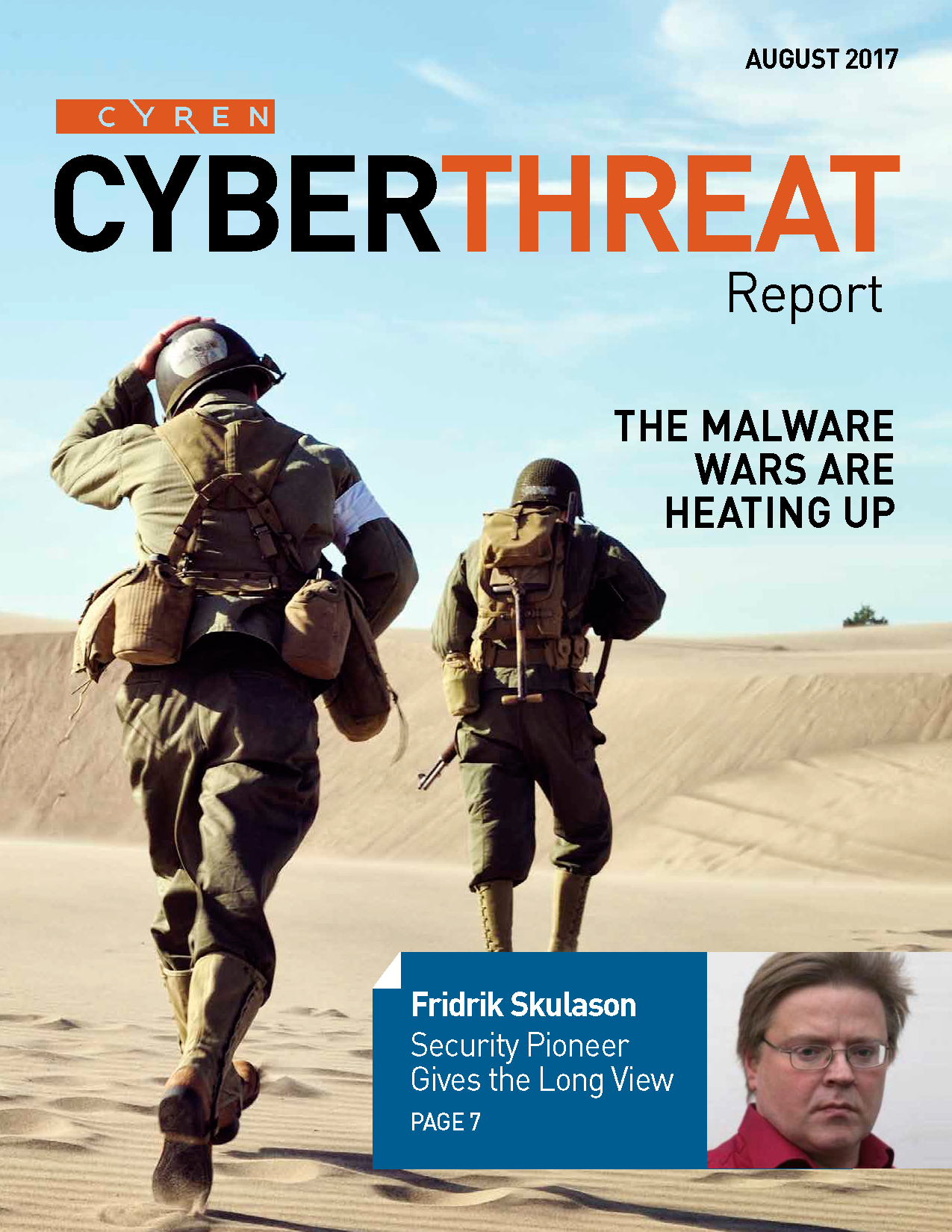If you want to know what a cyber-war looks like, read the news. And if you want to get up to speed quickly and try to make sense of all that news, I recommend downloading our new special report on malware, with a special nod to the included interview of anti-virus pioneer Fridrik Skulason, Cyren’s VP of Anti-Malware Technologies, who discusses the past, present, and future of malware from the perspective of 30 years’ experience in fighting cybercrime.
There is an excellent glossary of malware types, such as spyware and trojans, at the beginning of the report, followed by a summarized history of malware to provide context for today’s events, providing a “long view” which complements the interview.
The report’s other several articles explore the May and June mass-scale, global ransomware attacks; the explosion of hyper-evasive malware, designed to evade conventional sandbox detection; best practices for stopping malware; and how criminals are using encrypted SSL connections to hide malware, sharing the results of a study showing that almost 40% of all web malware today utilizes HTTPS—yet recent surveys show that the majority of companies around the globe are not inspecting that traffic.
Cybercriminals are “All in”
Possibly no time period since the advent of the Internet has experienced as many dramatic global incidents directly related to malware and cyberthreats as the last 12 months. From election hacks to global ransomware attacks, malware threats are at an all-time high. And, unfortunately, as long as it proves lucrative, the only certainty is it will only get worse.
Today, no item or user connected to the Internet is immune to attack. While many businesses are still studying what security measures might be necessary, cybercriminals are “all in,” creating dangerous new tools to target companies, governments, and private citizens. We need to be mindful that the world has changed. Hyper-evasive malware and threat distribution via HTTPS are growing rapidly; mobile devices— both Android and Apple—are increasingly targets; and Internet of Things tools, from refrigerators to televisions, are an inviting new vector for criminal purposes.
A Three-Front War
In this cyber-war, with respect specifically to malware, three current battlefronts stand out: ransomware, hyper-evasive malware, and malware distribution via HTTPS. Clearly cybercriminals know the weak points in standard corporate defenses, and they’re optimizing their attacks to leverage security gaps related to these three threats in every possible way.
One of the reasons that Cyren produces reports like this is to help businesses better understand the nature of the risks they are facing. In the past 25 years, malware has transformed from a mere nuisance into something that has the power to shut down hospital systems, steal millions from bank accounts, and significantly affect the well-being of businesses and people worldwide. We hope you find the report informative, and that it contributes to a better understanding of the problems faced, and the solutions required.
You can download Cyren’s latest in-depth analysis on malware here and I invite you to check out the on-demand webinar How Changing Malware is Changing Security.
Enjoy!
Want to learn more about cloud-delivered web security? Contact us here!

